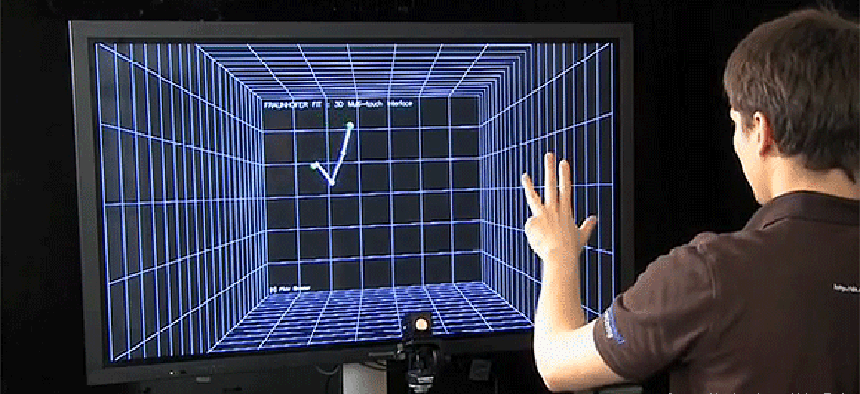Gesture control: Great innovation or Tower of Babel?


Connecting state and local government leaders
Operating a computer with no-touch hand gestures is the hot new thing in user interfaces, but without standards we'll need to know a different "language" for every device.
The companies at CES this year seemed to be really focused on display technology, including actually showing some working OLED models. But beyond just the physical nature of the displays, the industry also seems to be obsessed with making sure we can communicate with our displays in innovative ways.
I’ve already predicted that the proliferation of Windows 8 is going to spike a demand for touch screens, even at the desktop level. But according to the companies at CES, everything from televisions and phones to cars and games are going to begin adding gesture technology.
We have a request in to test one of the first Leap Motion devices when they become available in a couple of months, since many Leap-enhanced devices could start making their way into public-sector circles. But there are many companies introducing gesture interfaces, or soon will be.
Something I hadn’t considered, though, was brought up by Computerworld editors after sampling gesture-controlled devices at CES. There are no standards. Going from one gesture-based input device to another now could be as different as speaking French or Chinese. Motions that do one thing for a specific device might do nothing at all with another, or worse, do something different that what you desire. Want to move a file from one folder to another? Sorry, you just formatted the hard drive with your left arm.
The problem is that some companies -- and I’m looking at you, Apple -- have tried to copyright a lot of gestures, such as pinching to zoom in or out of a screen (though U.S. patent authorities recently rejected that one, at least temporarily), or sliding to unlock a device.
The online site io9 points out that a whole lot of gestures are already copyrighted, and not just by Apple. That company seems to be the biggest gesture hoarder, even applying for copyrights on crazy three-fingered, twirling gesticulations that probably won’t ever be used, but which it doesn't want anyone else getting their grubby three fingers on. In a way it reminds me of the early days of the Web, when all the good, short addresses were being snapped up quickly.
Faced with the elimination of the more common gestures, companies have to get creative to make their new devices work while not stepping on the legal toes of someone else.
If we don’t want to be issued a hula hoop and jump rope in order to flip through our TV channels in the future — and really, nobody wants that — I suggest that the industry get together and form a gestures working group, like the IEEE has for wireless, to develop standards that everyone could use.
Gesture controls really could be a huge change in how people user their computers, whether at home, in the office or in the field. It’s easy to see how it could catch on in presentations or educational settings, as well as with mobile, and even desktop, devices. And it has potential in medical settings, such as operating rooms, where not having to touch a screen or keyboard is an advantage. But gestures would have to work in a uniform manner, like a mouse or touchpad does.
That would mean some companies would need to give up their patents on gestures for the good of the whole. The alternative is a gesture war that could stifle what could be one of the most innovative areas to hit computing in years. And if that happens, I can only think of one appropriate gesture as my response.




